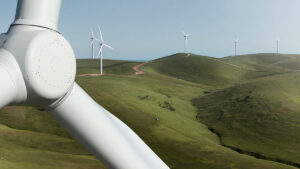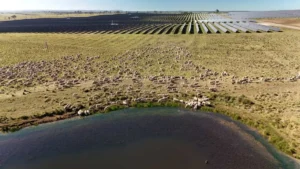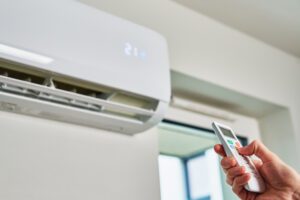Tesla CEO Elon Musk was in an ebullient mood on Thursday (US time) after shareholders approved the $A84 billion pay package that had been refused by a Delaware judge, and promised the latest “mind-blowing” technology breakthrough for the energy industry.
In a presentation that made big predictions about the development of AI technology – billions of humanoid robots, robots-taxis and trillions of dollar in profits for Tesla – Musk said he also had a surprise for utilities.
This would be in the form of a new version of the company’s Megapack battery, which Musk says will be able to plug in directly to the high voltage network without the need for a substation.
“Megapack 3, which is a probably a couple years away, will start actually absorbing more and more of the substation of the power electronics,” Musk said during a presentation after the shareholder vote at the company’s annual general meeting.
“I sort of think you want to get to the point with the Megapack where you can literally just take the high voltage power lines and plug them in. There’s no substation. We just just plug them in. Just drop them down and … and plug it in.
“Which is like, mind blowing for the utility industry by the way. Like, they’re like what? Yeah, you just plug the wires in and it’ll work for very high voltage. So that I think is actually going to be major.”
To be fair, Musk has already blown the minds of many in the utility industry simply by building the world’s first Tesla Big Battery, and then following that up with even bigger batteries, and sophisticated inverter technologies that can provide key grid services such as inertia and system strength.
All these are things that many in the energy industry would have thought as unlikely or even impossible less than a decade ago.
But the same people were probably also arguing that having a share of wind and solar of more than 10 per cent in a grid was also not possible. Some people in the industry even still believe in the primacy of “baseload, though in reality not that many.
Renew Economy understands that the technology that Musk is talking about revolves around in-house developments in power electronics and inverter technology that allows them to operate at high voltage. But it is seen as a stretch goal, and – as Musk suggested – is probably still a few years away.
Still, things are changing rapidly. Grid engineers are discovering solutions that they never thought possible, or never even thought about doing, as they look to integrate variable wind and solar at levels of 80 per cent or more.
AI technology is also developing rapidly, and providing increasing insight into the way the grid really works. Many will doubt Musk’s claim that “everyone will want” a humanoid robot – let alone three – like the Optimus machines wandering around Tesla HQ and performing tasks on the company’s battery production lines.
But the humanoids might come in handy – even to hold the cable to test Tesla’s theory that its batteries can plug into the high voltage power lines. It might even send them to Mars, or to the market operator for an explanation.










